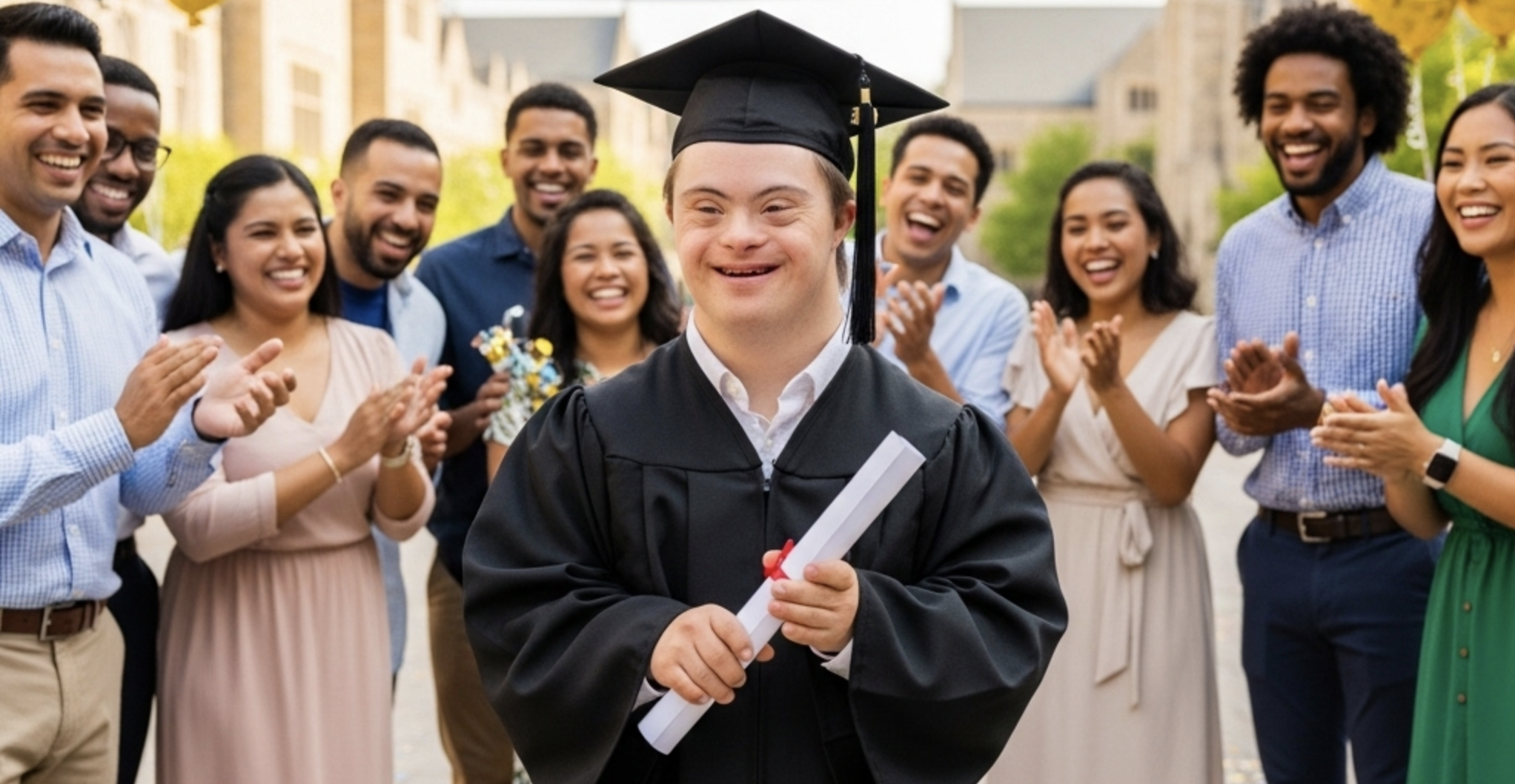Rising Graduation Rates for Students with Disabilities—Ann Arbor Shows What’s Possible
At a time when education headlines are often dominated by challenges—teacher shortages, test score declines, and funding battles—there’s a bright spot emerging from Ann Arbor, Michigan. According to newly released data, the Ann Arbor Public Schools district has seen a significant rise in graduation rates among two historically underrepresented student groups: students with disabilities and those from economically disadvantaged backgrounds.
From 2023 to 2024, the graduation rate for students with disabilities increased by nearly 5 percentage points, reaching 76.8%—a new high. For students who are economically disadvantaged, the number hit 81.6%. These aren’t just statistics—they represent real young people crossing a critical finish line into adulthood with new opportunities ahead.
For families in the Down syndrome community, this progress is particularly heartening.
Ten years ago, just over 72% of Ann Arbor students with an Individualized Education Program (IEP) earned their diplomas. That rate had dipped as low as 60.1% in 2018. But the tide has turned. Thanks to a combination of individualized curricula, early-warning systems, improved counselor training, and personalized credit recovery programs, more students are staying on track—and finishing strong.
“This shows what’s possible when a district invests in inclusive support,” says an education advocate from Down Syndrome Nation. “We know our kids can succeed when they’re given the right tools and opportunities. Ann Arbor is proving that.”
While statewide graduation rates remain lower across many groups, Ann Arbor continues to outperform Michigan averages—even with more rigorous requirements (22 credits vs. the state’s 18). Importantly, school officials are not resting on these gains. They’re tracking attendance, grades, and discipline trends with monthly updates and using tools like Grad Alliance and Edgenuity to support students who need alternative paths to the diploma.
Questions still remain about how graduation is defined—particularly for students receiving certificates of completion versus traditional diplomas. But the overall trend is undeniable: more students with disabilities are reaching this critical milestone.
Let’s be clear: this isn’t just about numbers. A high school diploma unlocks future jobs, vocational training, and a greater sense of independence. It’s a signal to the world that students with disabilities deserve, and are capable of, full participation in society.
For families raising a child with Down syndrome, Ann Arbor’s story is a beacon of hope. With the right supports, advocacy, and a belief in every student’s potential, graduation isn’t a dream—it’s a plan.
Want to help your district follow Ann Arbor’s lead? Start by talking to your school’s special education team. Ask about personalized learning options, credit recovery programs, and early warning systems. Together, we can push for progress—one student at a time.

0 Comment